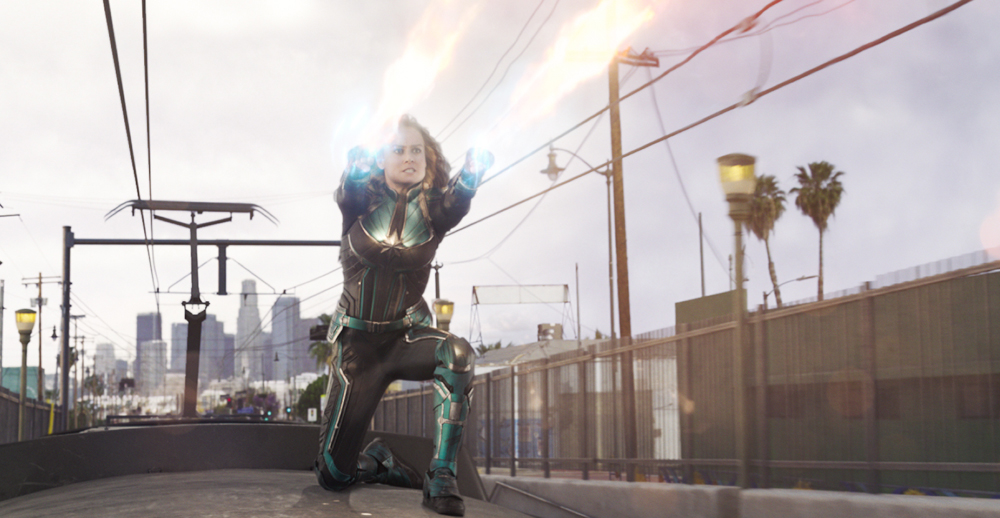In the 1950s, Captain Marvel was a man. Today’s Captain Marvel is a woman. It’s a complicated story, but that’s the bottom line.
Batman used to be a straight-up “good guy” in a costume, battling criminals. Today he is a tormented character constantly battling psychological issues from his past. His arch-enemy, Joker, was the quintessential sadistic villain. Today he is also a mixed-up soul with a horrid past deserving of almost as much sympathy as disdain.
Superman was a “foundling” from another planet. Lately, his identity problems have become magnified, and for a time he was in a titanic struggle against his fellow DC superhero (Batman vs. Superman) because he was perceived to have become a threat to the world.
Wonder Woman has become a resurgent force gaining more superpowers in her most recent incarnation, in step with the growing strength of the worldwide feminist movement.
Black Panther has finally achieved a strong identity for the Black Superhero, a new source of pride worldwide for people of African descent.
More recently, even the motley superhero pack of Avengers in the Marvel universe have found themselves engaged in their own “civil war,” analogously mirroring today’s many pocket conflicts, not only among neighboring states, but within the states themselves. Perhaps not coincidentally, the X-men, the world’s outcast mutants born with weird individual powers, have also been engaging in their own internecine wars.
Wave
As I was writing this piece, I read a news article announcing that as part of Marvel’s 80th anniversary celebration in the Philippines, it has created a new Filipina superhero named “Wave.” As her name suggests, Wave has an affinity for water, and through accidental exposure to an illegal biotech chemical, she acquired telekinetic powers over water molecules. We will learn more about her as Marvel celebrates its anniversary this year with its local partner, the SM Group.
Looking at her photo, I’m wondering if Wave’s arrival on the local scene will have any impact on our enduring homegrown superhero, Darna.
A combination of Superman, Captain Marvel and especially Wonder Woman, Mars Ravelo’s Darna first flew in Philippine skies in Pilipino Komiks when I was in grade school, and quickly became one of my favorite heroes. Endowed with great strength, speed, the ability to fly, and virtually invulnerable, her main preoccupation was fighting freaky villains like Valentina (the Serpent Woman) who had snakes for hair, like Medusa of Greek mythology.
The earliest Darna movies starred Rosa del Rosario and Alicia Vergel. In my boyish mind, Darna, as played by these Amazon-like screen goddesses, was literally from another world. I was endlessly intrigued by the flying scenes (primitive by today’s digital standards) in which Darna’s small brother, Ding, rode on her back while she soared across the sky.
Darna continues to be the classic Filipino superhero. Although she has also evolved as she migrated from comic books to cinema and TV, she has somehow retained the “purity” of her character, without the many complicated issues that the creators of other superheroes have imposed on their characters. Perhaps this is one sign that Philippine society is still not as convoluted as the rest of the modern world.
As one write-up put it, “Darna has always been a representative of Filipino values … She values freedom in what could be said to be a more classic fashion compared [to] modern America. She is a defender of the small.” (write-ups.org)
Our 1950s generation was fortunate to have witnessed the procession of fictional heroes who populate media to this day. As children, our daily radio fare on weekday evenings were the continuing adventures of “Prinsipe Amante” and the crime-fighting trio, “Tatlong Limbas.” Also on the same time slot were the US-made “The Lone Ranger” (with its galloping William Tell Overture) and “Mandrake the Magician,” who produced hypnotic illusions to defeat villains. I remember writing in and excitedly receiving Mandrake’s free magic instruction booklet, my first of many books as an amateur magician.
Another activity which introduced the original superheroes to my generation was going to movie “whole serials” on weekends, the closest thing to today’s HBO and Netflix series. The difference was that you could watch all the “installments” in one go, staying in the movie house for many hours.
This was where I first met the original film versions of Captain America, the Phantom, the Masked Marvel and other heroes whose powers were not yet the incredible abilities they have today. These uncomplicated “good guys” simply spent most of their time battling the “bad guys” in action-packed fight sequences.
They had no time to brood over their tragic boyhood, their identity issues or their heartrending love affairs. They lived not only figuratively but also literally in a simple black-and-white world, because these low-budget movies were filmed with the most basic technology of that time.
In contrast, today’s superheroes live in a grand and colorful cinematic universe, and their creators have filled it with more human drama by adding depth to their personae. Today the line between pure hero and pure villain has blurred, with heroes of yesteryears revealing a darker side, and villains exposing vulnerability previously absent.
From a true-life perspective, this added focus on character makes the superhero (and his villain) more real. And because at some time in our youth many of us have fantasized being a superhero ourselves, as adults we can identify more intimately with their present versions.
I suspect this is one reason today’s worldwide audiences eagerly anticipate the next big superhero movie. —CONTRIBUTED









































